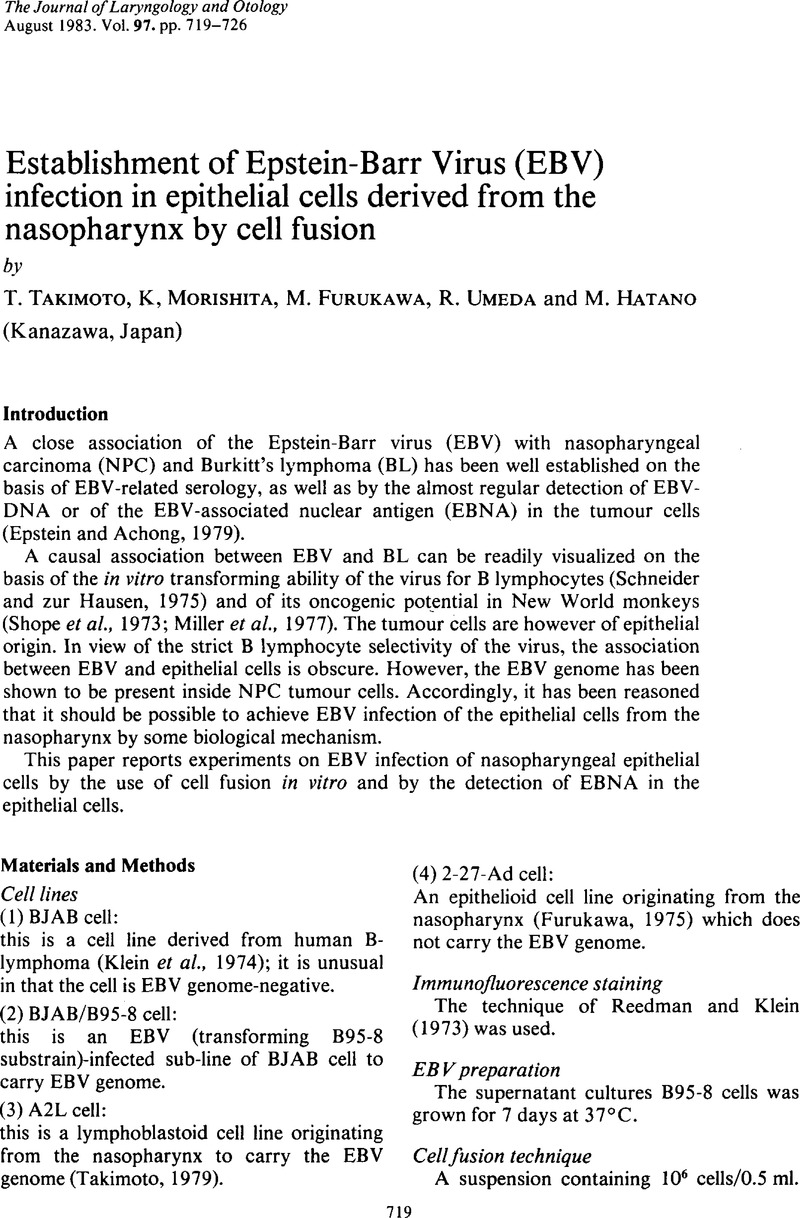Crossref Citations
This article has been cited by the following publications. This list is generated based on data provided by Crossref.
Takimoto, Toru
Morishita, Kazuo
and
Umeda, Ryozo
1985.
Effects of Temperature On Epstein-Barr Virus Replication In Epithelial/Nasopharyngeal Carcinoma Hybrid Cells.
Auris Nasus Larynx,
Vol. 12,
Issue. 1,
p.
31.
Richtsmeier, William J.
Wittels, Edward Gerard
Mazur, Eric M.
and
Sprinkle, Philip M.
1987.
Epstein-Barr Virus-Associated Malignancies.
CRC Critical Reviews in Clinical Laboratory Sciences,
Vol. 25,
Issue. 2,
p.
105.
Takimoto, Toru
Tanaka, Saichiroh
Ishikawa, Shigeru
and
Umeda, Ryozo
1989.
The Human Nasopharynx as a Reservoir for Epstein-Barr Virus.
Auris Nasus Larynx,
Vol. 16,
Issue. 2,
p.
109.
Takimoto, Torn
Sato, Hiroshi
Ogura, Hisashi
Tanaka, Saichiroh
Masuda, Koh
Ishikawa, Shigeru
and
Umeda, Ryozo
1989.
Differences in the ability of cells to fuse are mediated by strains of epstein‐barr virus.
The Laryngoscope,
Vol. 99,
Issue. 10,
p.
1075.
Makowska, Anna
and
Weiskirchen, Ralf
2024.
Nasopharyngeal Carcinoma Cell Lines: Reliable Alternatives to Primary Nasopharyngeal Cells?.
Cells,
Vol. 13,
Issue. 7,
p.
559.





